AORN 2000: Perioperative Nurses Find Exhibition a Surgical Toystore
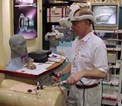
NEW ORLEANS – Aside from the lure of discussing issues, listening to lectures and networking with colleagues and peers, perioperative nurses flocked to the Annual Congress of the Association of periOperative Registered Nurses to hear about, see and touch the latest products hitting the market. This year, they weren't disappointed.
Here's a synopsis of what attendees saw on display.
Richard Wolf Medical Instruments Corp. (Vernon Hills, IL) debuted its "head-mounted display" technology for surgeons. Typically, when surgeons perform minimally invasive procedures, they must continually watch a nearby monitor as they move the instruments around inside the patient's body cavity. With Wolf's new system, however, surgeons don't have to rely on views they see on the monitor. Instead, this five-month-old product gives them three-dimensional viewing right to the headset. This device doesn't eliminate the monitor, however, which can still be used by other circulating personnel.
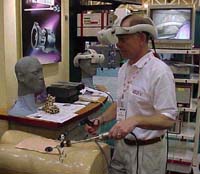
Stryker Corp. (Kalamazoo, MI) showed how its new Neptune Waste Management System collects, treats and disposes liquid waste in the operating room without the usual suction canister or red-bag routine. Basically, Neptune is an automated collection tank on wheels that's hooked up to an OR wall vacuum. Once a surgical case is completed, the cart is rolled over to a docking station where the waste is sterilized and flushed into the sewer system. Neptune is safer for healthcare workers because it eliminates splashing or exposure to the liquid waste, according to Stryker, and it's a cost-effective method to get rid of waste. Neptune also can function as a smoke and odor evacuator to 0.1 microns. The product was originally launched last year by American Immuno Tech LLC (Costa Mesa, CA), which Stryker recently acquired.
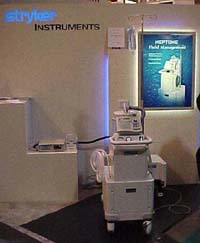
Ethicon Endo-Surgery Inc. (Cincinnati, OH) demonstrated its Harmonic Scalpel and Harmonic Scalpel II devices as alternatives to the traditional steel blades, electrocautery devices or lasers used to make soft-tissue incisions with minimal bleeding, thermal injury or electrical energy transferred to or through the patient. The primary difference between the two products is that the Harmonic Scalpel II has curved sheers. The company also showed videos of surgeries being performed with the ultrasonic device.
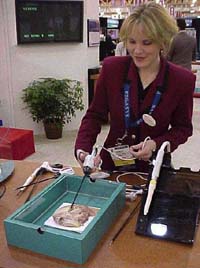
Across the aisle, sister company Ethicon Inc. (Somerville, NJ) emphasized the opposite approach by promoting its DermaBond topical skin adhesive. The Johnson & Johnson company also showed videos on flat-screen monitors of surgeries being performed with DermaBond.
Oasis@work (Sarasota, FL) unveiled its second-generation Touch-Access information system complete with a new, more contemporary and flexible design. Using the new system, hospital employees can access information about policies and procedures, products and product training, accident reporting, safety training and market issues by touching the built-in viewscreen on the multimedia "TouchPorts."  Information can be collected from the Internet as well as the hospital's computer system and cached in the hospital's intranet. The TouchPorts themselves, which are manufactured by IBM, are free; Oasis@work charges for the database service. The company debuted its original, more futuristic version at last year's AORN exhibition in San Francisco.
Information can be collected from the Internet as well as the hospital's computer system and cached in the hospital's intranet. The TouchPorts themselves, which are manufactured by IBM, are free; Oasis@work charges for the database service. The company debuted its original, more futuristic version at last year's AORN exhibition in San Francisco. Company representatives noted that they're still making the older models.
Company representatives noted that they're still making the older models.
Karl Storz Endoscopy-America Inc. (Culver City, CA) promoted its broad line of rigid and flexible endoscopes, hand instruments (including its new ClickLine models), insufflators, suction and irrigation devices, video cameras, lights and documentation systems as well as its OR1 advanced surgical suite with dual ceiling-mounted booms.

Perioperative nurses also learned about the dangers from having their endoscopes repaired improperly from third-party service organizations. Bill Brackett, lead technician for instrument repair at Karl Storz, showed Hospital Network.com how repair companies remove endoscope lenses, refit them and recess them in such a way that they can fall out when they're inside a patient. Brackett also noted that when ORs send their endoscopes out to fill in any holes that develop with usage over time, repair companies tend to fill those holes with lead. "Every time the scope is inserted in a cannula, that iron is shaved off into the body of the patient," he said.
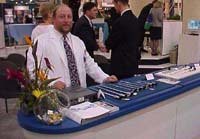
Getinge/Castle Inc. (Rochester, NY) demonstrated its new Castle 8666 Air Glide System for automated washing and disinfecting of devices. The Castle 8666 AGS has a single-point loading station for a healthcare worker to load dirty instrument onto wash carts and trays, which are then automatically moved through a series of washer banks via conveyor system. An automated rack return conveyor sends the rack from the clean side through the barrier wall to the soiled side. Because the AGS shuttle is independent from the floor, operators can more easily access windows and controls for routine cleaning, maintenance and service. Senior executives at Getinge/Castle noted that the Castle 8666 AGS takes sterile deprocessing operations into the new millenium.
"If you look at sterile processing today, it's much more of a manufacturing operation," Robert Von Kaenel Jr., vice president of sales and marketing, told Hospital Network.com and sister Web site Nurses.com.
Creighton White, Getinge/Castle's president and CEO, agreed. "[Sterile processing equipment] is becoming much more sophisticated and automated to eliminate human error," White said. "And it's becoming much less labor-intensive, too."
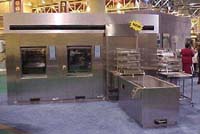
Getinge/Castle also promoted its T-DOC software, which hospital OR and sterile processing departments use to track employee and instrument productivity. Because of its open architecture, T-DOC is compatible with competing instrument management systems and can be integrated with other systems on the back end, according to Von Kaenel.
"If [sterile processing] is a manufacturing operation, you need manufacturing-like control," he said. "We're beginning to elevate the profession to attract more qualified people. It's the backbone of the hospital really, because you can't do surgery without effective sterilization."
Getinge/Castle also showcased its new Castle Fortis 600 remote-controlled, full-function, general surgical table. Because the table has greater weight-bearing capacity, surgical professionals can fully articulate patients up to 600 pounds. The table can be adapted for surgical procedures that require mobile image amplification with its expanded longitudinal slide feature and built-in X-ray cassette tunnel. The Castle Fortis 600 incorporates a patented backlit hand pendant, an improved charging system with power-save feature, a full-feature manual backup system and a new base design. Getinge/Castle senior executives said they plan to begin shipping the table in June.
Maquet Corp. (Mt. Pleasant, SC) dramatically demonstrated the durability of its new Alphastar Plus advanced surgical table by showing how it can support a late-model Volkswagen Beetle. A completely sealed base prevents leakages from ruining moving components and the three-point stand keeps the table steady and secure, according to Roman Gross, Maquet's vice president of marketing. Perioperative nurses test-drove the table using the infrared control wand.
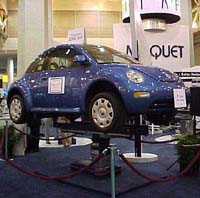
Johnson & Johnson's DePuy Inc. unit displayed its ProVision surgical helmet system, which surgeons typically wear during orthopedic procedures to eliminate exposure to bone fragments, blood and body fluids and aerosolized particles.


In its booth, Smith & Nephew Inc. taught perioperative nurses how to cast broken bones using its Dynacast synthetic casting wrap. Doctors have traditionally performed such procedures, but they now want nurses to handle post-operative immobilization so they can concentrate on surgery, according to a Smith & Nephew representative. Although the company introduced the fiberglass casting tape in early 1999, nurses still crowded the booth for hands-on demonstrations. Smith & Nephew also promoted its Ortho-Glass latex-free wrap with hook loop closure, Ortho-Glass color wraps, which are available in six different colors, and its multi-colored Co-Plus latex-free cohesive bandages and Rol-Flex cohesive bandages.
Electroscope Inc. (Boulder, CO) showed how to prevent stray electrosurgical burns on patients with its AEM Laparoscopic Instruments. Electroscope's AEM instruments sport a protective shield to prevent such burns due to insulation failure and capacitive coupling.
Cohesion Technologies Inc. (Palo Alto, CA) highlighted its CoStasis surgical hemostat to control bleeding during surgery and hosted a contest to see which perioperative nurses could prep the hemostatic biodevice the fastest to win a free Palm Pilot III. The company also displayed its CoSeal surgical sealant, which "self-polymerizes at the surgical site in seconds." CoSeal is completely synthetic, biocompatible and bioresorbable. It's based on polyethylene-glycol technology.
Kmedic (Northvale, NJ) displayed its CleanPunch System, which is a rack designed for six CleanPunch instruments to be cleaned, sterilized and stored. KMedic introduced CleanPunch several years ago as an alternative to the traditional Kerrison because it can be cleaned completely in one piece. The company, which is part of Pilling, also promoted its complete certified orthopedic instrument line.
Meanwhile, Pilling (Fort Washington, PA), a unit of Teleflex Inc., showed its N-Compass instrument inventory management system and its Trakker Pro instrument traffic system. A Microsoft Windows-based software database solution, N-Compass enables healthcare facilities to review and analyze data to better manage instrument purchasing, processing and maintenance. It provides instrument count sheets, locator, repair records, inventory, tray usage, illustration references, cross-reference listings of vendors and valuations. An electronic traffic management system for instrument trays and equipment, Trakker Pro tails each tray from clean storage to the OR and back through sterile processing. It provides tray location, instrument set inventory, tray maintenance, tray scheduling and usage, sterilization records, employee training and productivity management capabilities using bar coding and cordless handheld scanners.
